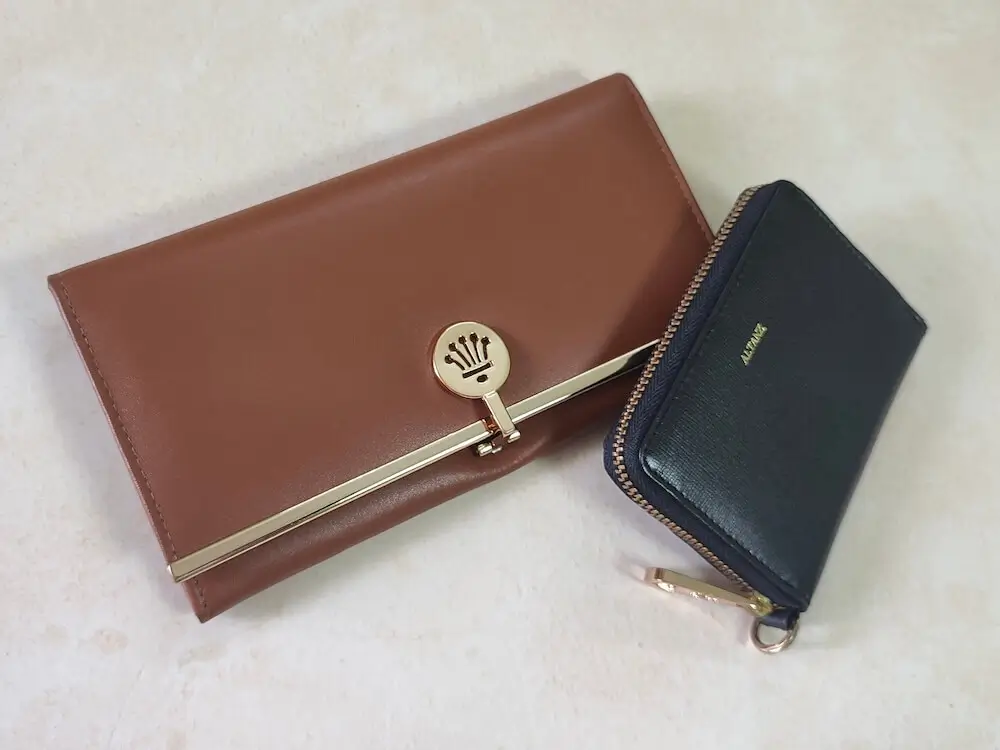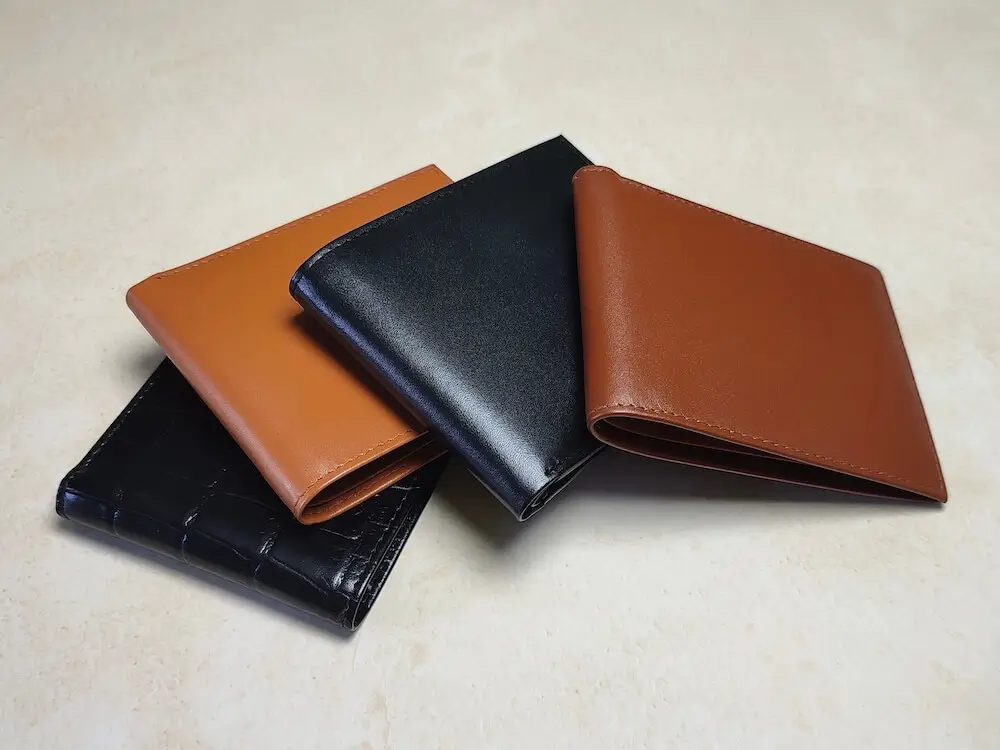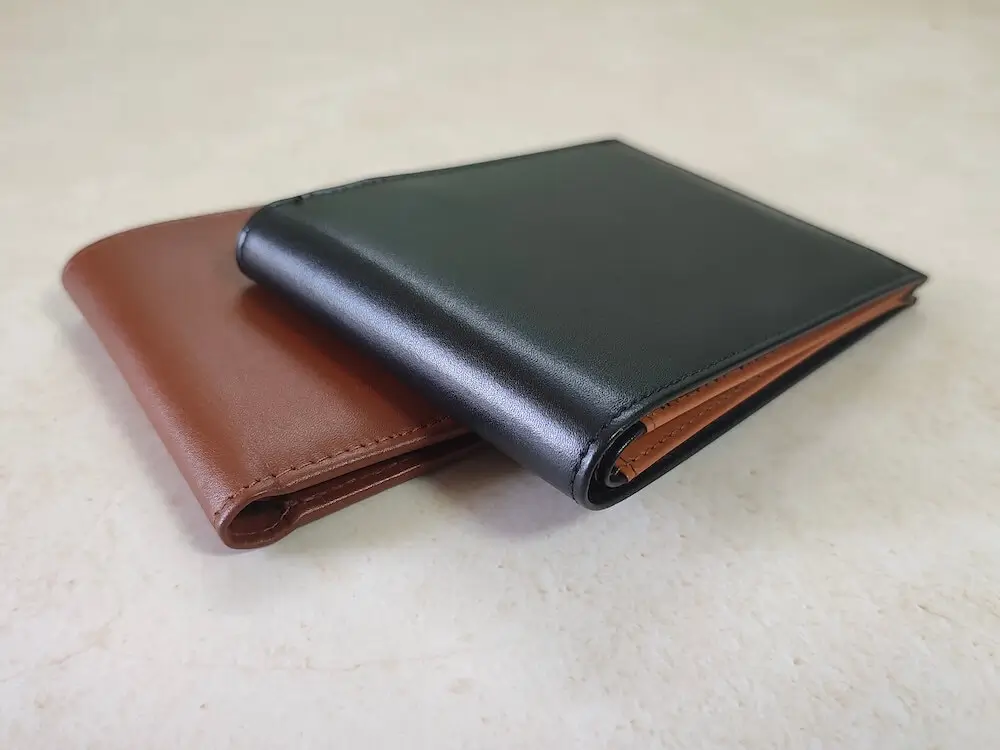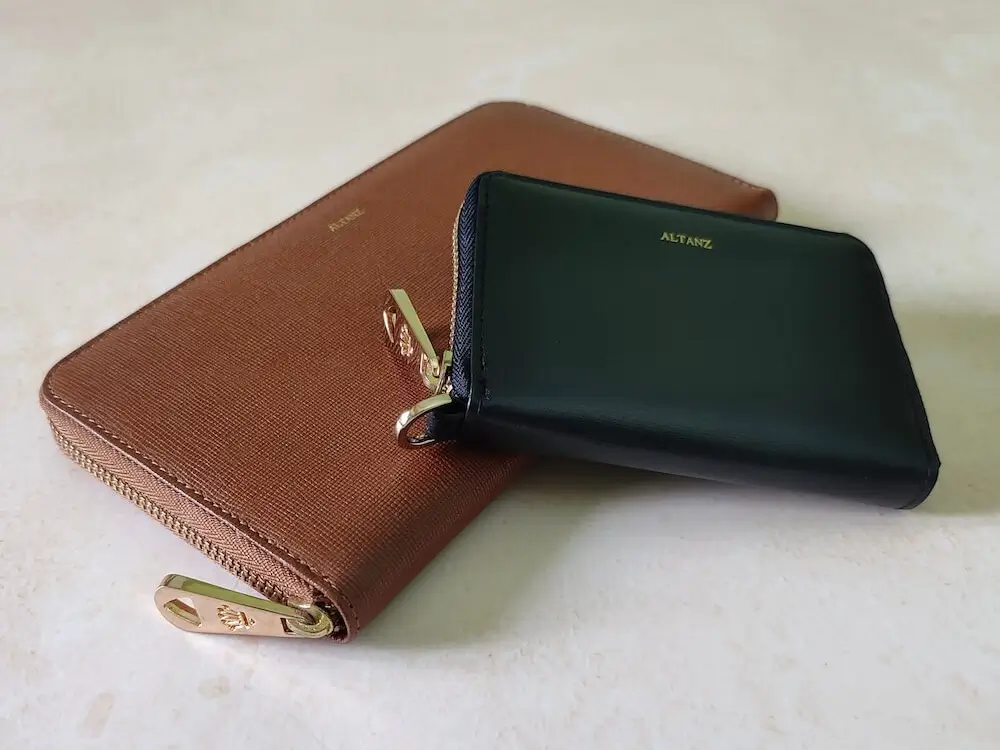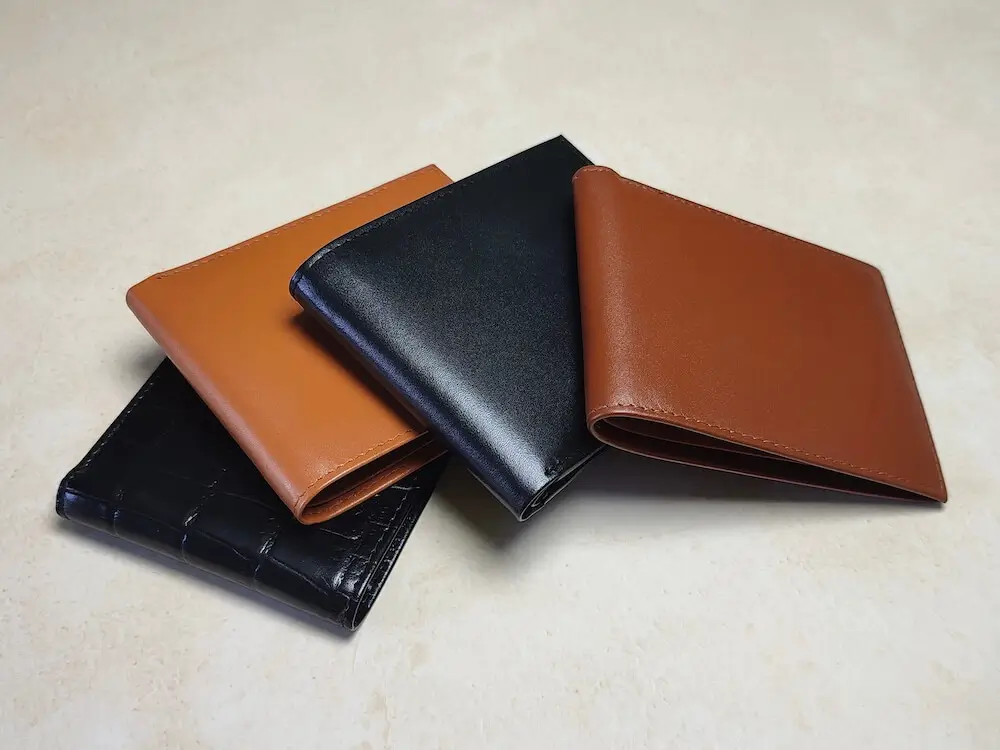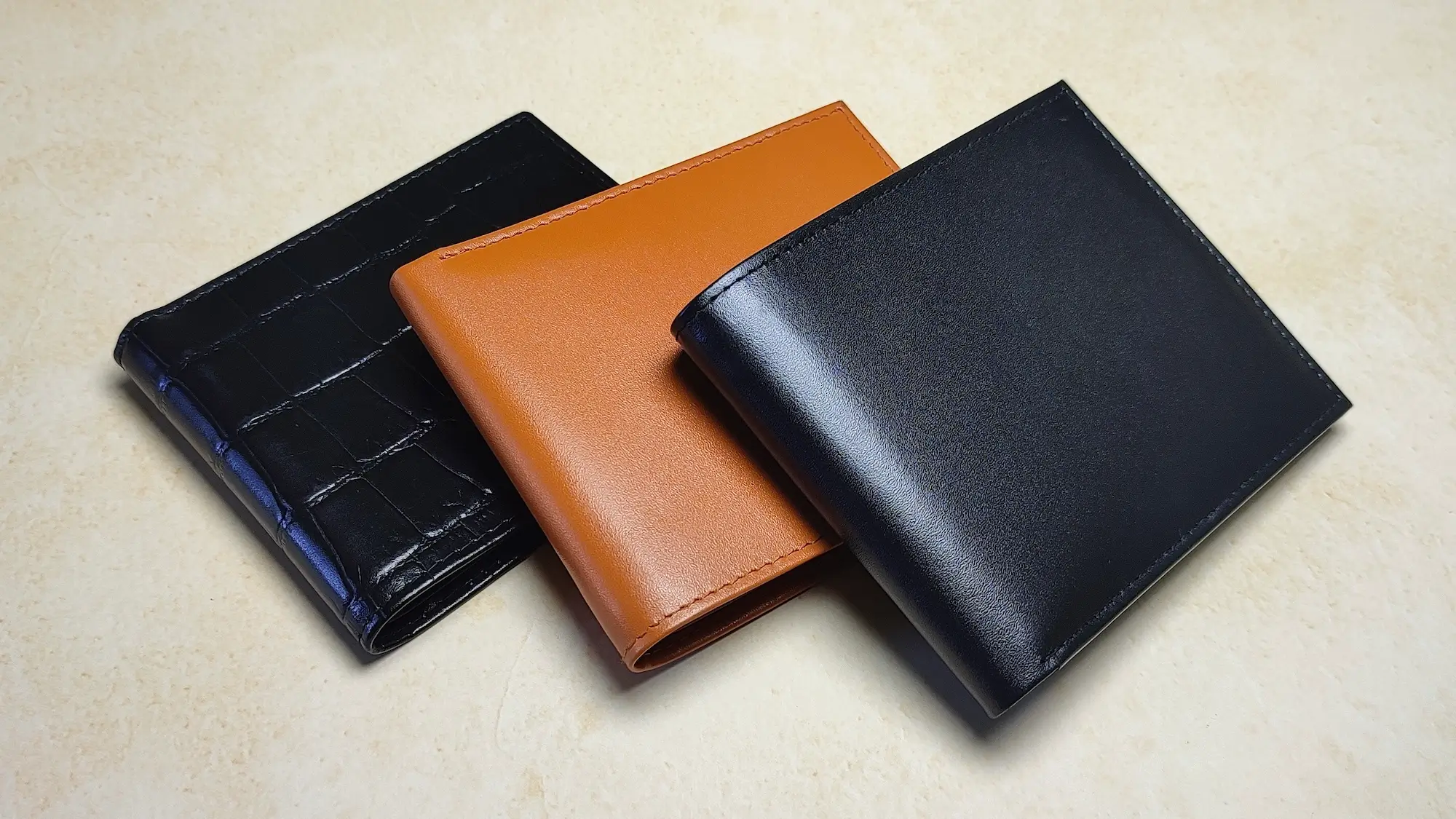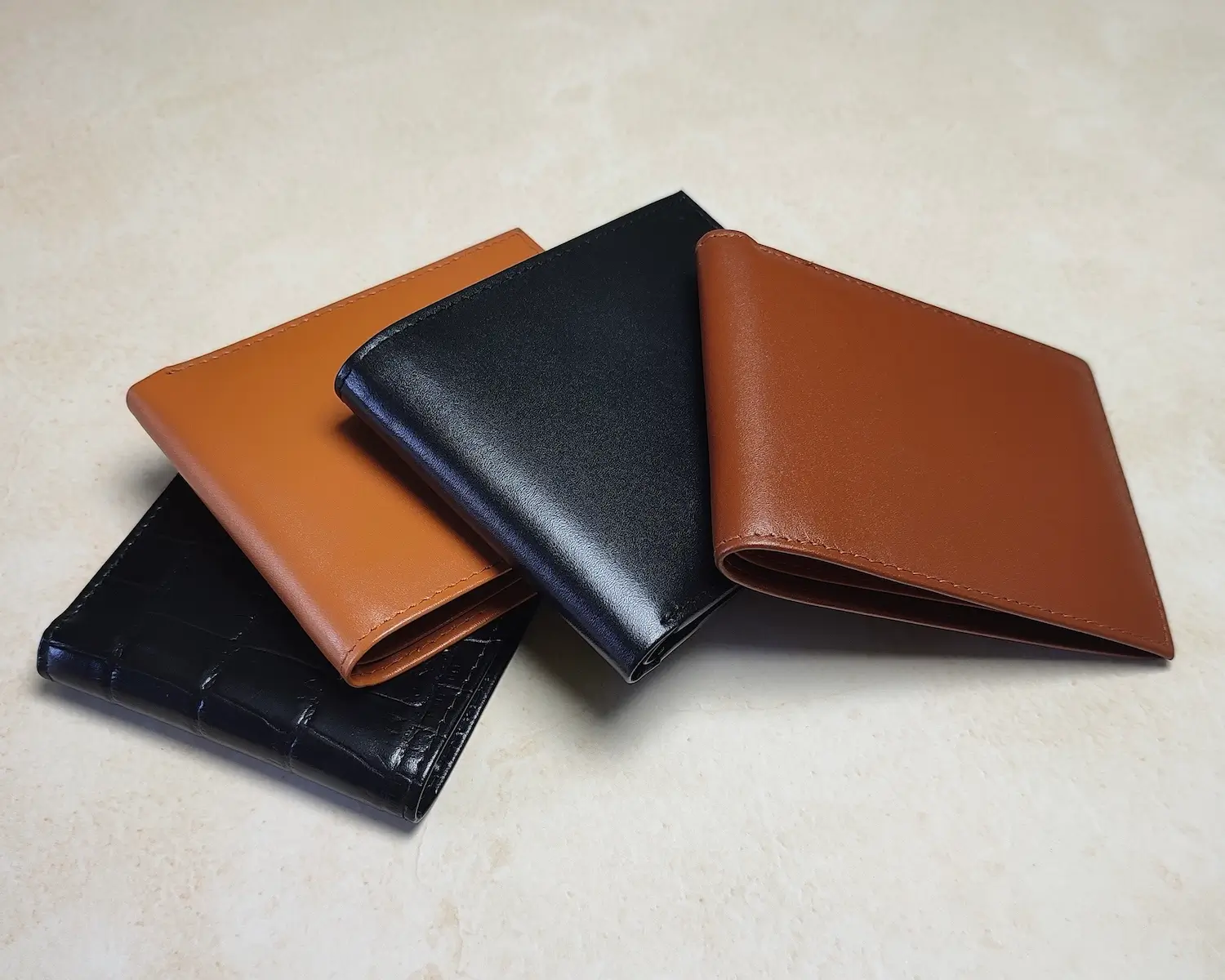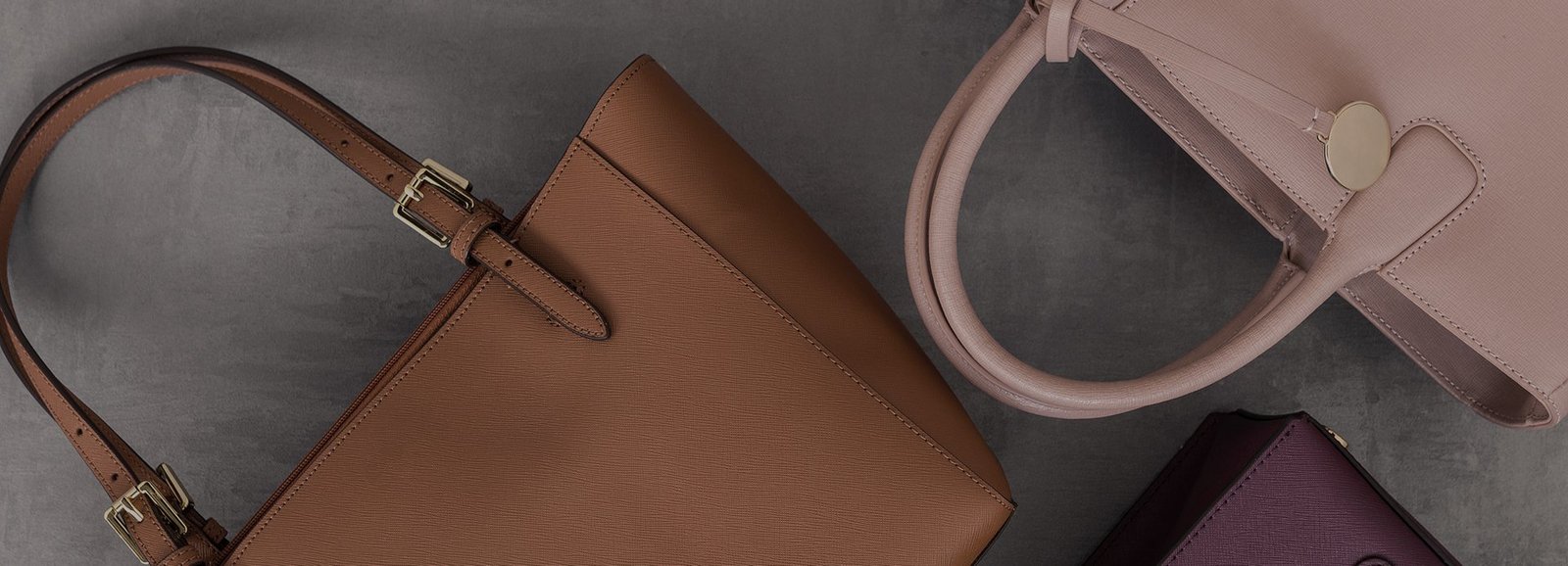Craftsmanship & Heritage
The Importance of Leather Grain and Texture in High-End Luxury Goods
Introduction
Leather grain and texture are integral to the quality and appeal of high-end luxury goods. From the supple feel of a premium wallet to the intricate patterns of exotic leather, these attributes define not only the product’s durability but also its aesthetic value.
This guide delves into the significance of leather grain and texture and their role in crafting luxury items.
What Is Leather Grain?
Leather grain is the natural surface layer of a hide, and its type directly impacts the quality and usability of leather goods.
Definition of Leather Grain
Leather grain refers to the pattern and structure of the surface fibers of a hide:
- Natural Surface: The grain is the outermost layer of the hide, retaining the original texture and pores.
- Key Indicator of Quality: Higher-quality leather retains more of its natural grain, while lower grades often have altered or artificial textures.
Types of Leather Grain
The four primary types of leather grain are:
- Full-Grain Leather:
- The highest quality, retaining the entire natural grain.
- Known for its durability and ability to develop a rich patina.
- Top-Grain Leather:
- Sanded to remove imperfections, offering a smoother and more uniform finish.
- Corrected Grain Leather:
- Heavily processed to remove flaws, often with an artificial grain stamped onto the surface.
- Split-Grain Leather:
- Derived from lower layers of the hide, less durable but often used for suede or lower-cost items.
How Grain Affects Quality
Grain determines key attributes of the leather:
- Durability: Full-grain leather is the most robust and resistant to wear.
- Aesthetic Appeal: The natural imperfections and texture of full-grain leather give it a unique character.
- Functionality: Different grains cater to various applications, from structured bags to flexible upholstery.
Understanding Leather Texture
Texture adds another dimension to leather, influencing its usability, style, and overall appeal.
What Determines Leather Texture?
Several factors contribute to leather’s texture:
- Animal Type: Cowhide, lambskin, and exotic leathers like crocodile or ostrich have distinct textures.
- Tanning Process: Chrome-tanned leather tends to be softer, while vegetable-tanned leather has a firmer feel.
- Finishing Techniques: Embossing, sanding, or buffing can create smooth, pebbled, or patterned surfaces.
Common Leather Textures in Luxury Goods
Luxury products showcase a variety of textures to suit different aesthetics:
- Smooth Leather: Offers a sleek and minimalist look, ideal for formal accessories.
- Pebbled Leather: Features a raised, grainy texture that hides scratches and adds depth.
- Embossed Leather: Mimics exotic patterns or adds decorative elements to the surface.
- Exotic Textures: Crocodile, ostrich, and stingray leathers are prized for their unique and eye-catching patterns.
Texture and Usability
The right texture enhances both functionality and style:
- Smooth Leather: Preferred for wallets and small goods that require a polished appearance.
- Textured Leather: Adds grip and durability, making it suitable for handbags and furniture.
Types of Leather Grain in High-End Goods
Different grains offer unique characteristics, each catering to specific luxury applications.
Full-Grain Leather
Characteristics:
- Retains the hide’s original surface, including natural imperfections.
- Strongest and most durable type of leather.
Why It’s Luxurious:
- Ages beautifully, developing a patina that enhances its character.
- Used in high-end goods like wallets, belts, and handbags.
Top-Grain Leather
Features:
- Sanded to remove imperfections, creating a consistent and smooth finish.
- Slightly less durable than full-grain but still high-quality.
Applications:
- Popular in handbags, briefcases, and furniture where a polished look is desired.
Corrected Grain Leather
Overview:
- Processed to remove flaws and stamped with an artificial grain.
- Often dyed or coated for a consistent finish.
Uses:
- Found in mid-range luxury items and products requiring a uniform appearance.
Exotic Leathers
Examples:
- Crocodile: Renowned for its distinctive, symmetrical pattern.
- Ostrich: Recognizable by its raised quill marks.
- Stingray: Features a glossy, pebble-like texture.
Why They’re Premium:
- Rare and labor-intensive to produce, exotic leathers are symbols of exclusivity and opulence.
The Role of Grain and Texture in Luxury Goods
Grain and texture aren’t just about aesthetics—they play a crucial role in the functionality, durability, and overall perception of luxury leather goods.
Aesthetic Appeal
Grain and texture define the visual allure of a leather product:
- Depth and Character: Full-grain leather showcases the hide’s natural imperfections, lending an authentic and unique appearance to each piece.
- Polished Finishes: Smooth and embossed textures provide a refined look, often preferred for formal accessories and premium goods.
- Exotic Statement: Textures like crocodile or ostrich immediately elevate an item’s exclusivity and luxury status.
Durability and Functionality
The type of grain impacts how well leather withstands wear and tear:
- Full-Grain Durability: Ideal for high-use items such as bags and belts, full-grain leather resists scratches and maintains its integrity over time.
- Textured Protection: Pebbled or embossed textures help hide minor scuffs and marks, making them practical for daily use.
- Exotic Leathers: While durable, they often require specialized care to maintain their texture and longevity.
Value and Perception
Grain and texture significantly influence the perceived value of luxury goods:
- Tactile Experience: The feel of leather—whether smooth or textured—can evoke a sense of quality and craftsmanship.
- Luxury Statement: Exotic grains and intricate textures serve as visual indicators of exclusivity, justifying higher price points.
Choosing the Right Grain and Texture for Specific Products
Different leather grains and textures are better suited to particular applications, balancing aesthetics and practicality.
Wallets and Small Accessories
- Smooth Leather: Perfect for wallets and cardholders due to its sleek and polished appearance.
- Pebbled Leather: Hides scratches and adds a subtle texture, making it a popular choice for daily-use items.
Handbags and Briefcases
- Full-Grain Leather: Offers durability and elegance, ideal for statement pieces that demand longevity.
- Exotic Textures: Crocodile, ostrich, and similar leathers create standout designs for high-end handbags and business accessories.
Furniture and Upholstery
- Textured Grains: Durable and resistant to wear, making them perfect for sofas, chairs, and other furniture.
- Corrected Grain: Provides a consistent, polished look that complements modern interiors.
Trends in Leather Grain and Texture
Luxury leather goods continue to evolve, with designers experimenting with grains and textures to meet modern tastes.
Minimalist Designs with Smooth Grains
- Clean Aesthetics: Smooth leather is often used in minimalist designs that focus on simplicity and elegance.
- Popular Products: Wallets, belts, and sleek handbags are often crafted with smooth, polished grains.
Revival of Exotic Textures
- Increased Demand: Exotic leathers like stingray, python, and crocodile are gaining popularity among luxury enthusiasts.
- Statement Pieces: Designers use these textures to create eye-catching accessories and one-of-a-kind fashion items.
Sustainable and Natural Finishes
- Eco-Friendly Appeal: Textures that highlight natural grains and avoid heavy processing are trending among environmentally conscious consumers.
- Artisanal Aesthetics: Hand-finished and vegetable-tanned leather emphasizes authenticity and sustainability.
FAQs About Leather Grain and Texture
-
What is the difference between full-grain and top-grain leather?
Full-grain leather retains the hide’s natural surface, including imperfections, while top-grain leather is sanded for a smoother, more uniform appearance. -
Are pebbled and smooth textures equally durable?
Pebbled textures are generally more resistant to scratches and wear, while smooth textures may show blemishes more easily but are preferred for their sleek look. -
Why are exotic leather grains more expensive?
Exotic leathers come from rare animals and require labor-intensive processing, making them more exclusive and costly. -
How does grain affect leather’s ability to age gracefully?
Full-grain leather develops a rich patina over time, while corrected-grain leather may not age as naturally due to its processed surface. -
What grain is best for everyday leather goods?
Pebbled or full-grain leather is ideal for everyday use, offering durability and the ability to hide minor wear and tear.
Conclusion
Leather grain and texture are more than just design elements—they are the essence of what makes luxury leather goods stand out. Whether it’s the rugged elegance of full-grain leather, the refined appeal of smooth textures, or the exclusivity of exotic grains, these attributes shape the quality, durability, and desirability of high-end products.
For discerning shoppers, understanding the nuances of grain and texture ensures that every purchase is not just a statement of style but also an investment in lasting craftsmanship. Whether choosing a wallet, handbag, or upholstered furniture, the right grain and texture will elevate both the look and feel of your luxury goods.
FAQ : Frequently Asked Questions
The Importance of Leather Grain and Texture in High-End Luxury Goods
Answer:
Full-grain leather retains the hide’s natural surface, including imperfections, while top-grain leather is sanded for a smoother, more uniform appearance.
Answer:
Pebbled textures are generally more resistant to scratches and wear, while smooth textures may show blemishes more easily but are preferred for their sleek look.
Answer:
Exotic leathers come from rare animals and require labor-intensive processing, making them more exclusive and costly.
Answer:
Full-grain leather develops a rich patina over time, while corrected-grain leather may not age as naturally due to its processed surface.
Answer:
Pebbled or full-grain leather is ideal for everyday use, offering durability and the ability to hide minor wear and tear.



